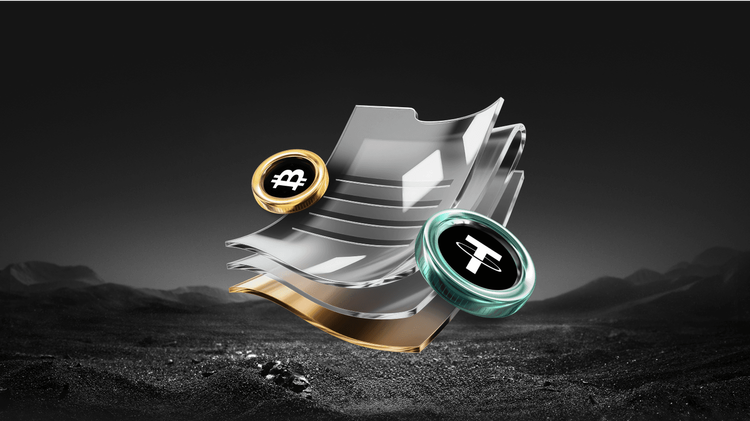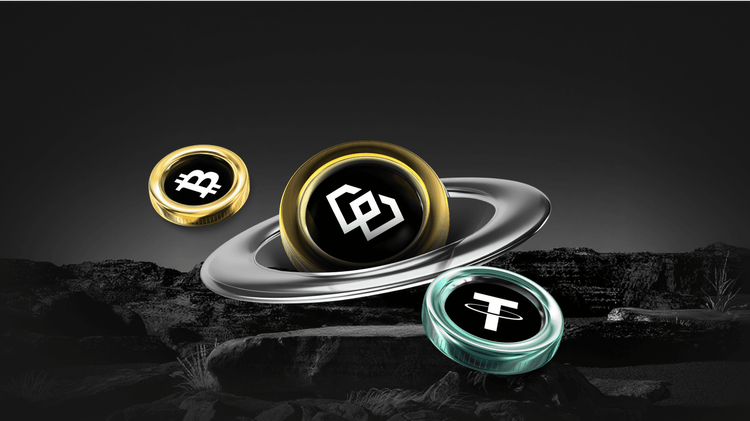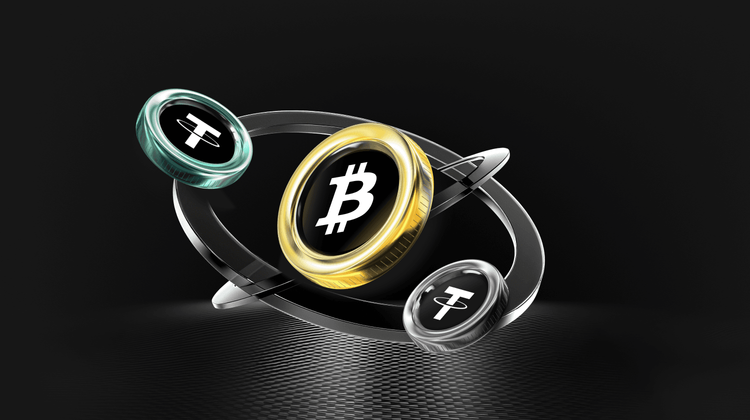Visa Expands Stablecoin Support Across Four New Blockchains: A Game-Changer for Crypto Payments
Key Takeaways
- Visa is set to integrate support for four new stablecoins on four distinct blockchains, enhancing its crypto services and allowing banks to mint and burn these assets.
- The payments giant has already facilitated $140 billion in crypto and stablecoin flows since 2020, with global consumer spending on stablecoin-linked cards surging fourfold in the recent quarter.
- This expansion focuses on broadening stablecoin offerings for banks, enabling seamless cross-border transactions and settlement on networks like Ethereum, Solana, Stellar, and Avalanche.
- Visa’s move underscores the growing momentum of stablecoins as a macroeconomic force, with monthly volumes hitting a $2.5 billion annualized run rate.
- By doubling down on stablecoin infrastructure, Visa aims to bridge traditional finance with blockchain technology, paving the way for more innovative payment solutions.
Imagine a world where sending money across borders feels as effortless as handing cash to a friend at a coffee shop. That’s the promise of stablecoins, those digital assets pegged to stable fiat currencies, and global payments leader Visa is stepping up to make it a reality. In a recent earnings call, Visa’s CEO Ryan McInerney shared exciting news that’s got the crypto community buzzing: the company is gearing up to support four new stablecoins on four unique blockchains. This isn’t just a minor update—it’s a bold stride toward integrating blockchain technology into everyday finance, making transactions faster, cheaper, and more accessible. As someone who’s followed the evolution of digital payments, I can tell you this feels like the moment when smartphones turned clunky cell phones into pocket-sized computers. Let’s dive into what this means for you, the banks, and the broader world of stablecoins and blockchains.
Why Visa’s Stablecoin Push Matters in Today’s Financial Landscape
Think about how Visa has been the backbone of card payments for decades, swiping away at point-of-sale terminals worldwide. Now, they’re extending that reliability to the volatile yet promising realm of cryptocurrencies, specifically stablecoins. These aren’t your wild-ride bitcoins; stablecoins are designed to hold steady value, much like a reliable savings account compared to a high-stakes stock. McInerney highlighted during the call that Visa sees “particular momentum with stablecoins,” pointing to the impressive $140 billion in facilitated crypto and stablecoin flows since 2020. That’s not pocket change—it’s a testament to how these digital tokens are reshaping money movement.
To put it in perspective, compare this to traditional wire transfers, which can take days and rack up fees like an overpriced taxi ride. Stablecoins, backed by blockchains, zip through networks in minutes, often at a fraction of the cost. Visa’s current lineup already includes popular ones like Circle’s USDC and Euro Coin, along with PayPal USD and Global Dollar, running on established blockchains such as Ethereum, Solana, Stellar, and Avalanche. Adding four more stablecoins and blockchains to the mix? It’s like expanding a highway system to handle more traffic without the jams. This growth isn’t happening in a vacuum—global consumer spending on Visa’s stablecoin-linked card services jumped fourfold in the fourth quarter compared to the previous year. Monthly volumes have now crossed a $2.5 billion annualized run rate, showing real traction.
But why the focus on stablecoins now? Well, they’re becoming a “global macroeconomic force,” as recent reports suggest, with transactions reaching staggering levels. A report noted stablecoin transactions hitting $46 trillion, underscoring their role in everything from remittances toDeFi (decentralized finance). Visa’s strategy aligns perfectly with this trend, positioning the company as a bridge between old-school banking and cutting-edge blockchain tech. For everyday users like you and me, this could mean using a Visa card loaded with stablecoins to pay for groceries or send money abroad without worrying about exchange rates or delays.
Diving Deeper: Visa’s Plans for Stablecoin Expansion and Blockchain Integration
McInerney didn’t spill all the beans on which specific stablecoins or blockchains are next in line, but the announcement builds on Visa’s existing ecosystem. Picture blockchain networks as different highways: Ethereum is the bustling interstate with heavy traffic but proven reliability, Solana is the high-speed expressway zipping along with low fees, Stellar focuses on efficient cross-border remittances like a well-oiled postal service, and Avalanche offers scalable, eco-friendly routes. By adding four more, Visa is essentially building new on-ramps, making it easier for banks and institutions to hop on.
One key area of emphasis is empowering banks to mint and burn stablecoins. Minting is like printing new money digitally—creating tokens backed by reserves—while burning removes them from circulation to maintain stability. This capability turns banks into active participants in the crypto space, not just observers. It’s a smart move, especially as cross-border payments become a hotspot. Late last September, Visa kicked off a pilot program with Visa Direct, letting banks pre-fund international transfers using USDC and Euro Coin. It’s like pre-loading a gift card for global spending, ensuring funds are ready when needed.
This expansion isn’t just about tech—it’s about brand alignment. For a company like Visa, known for trust and security, aligning with stablecoins reinforces its image as an innovator that doesn’t compromise on reliability. Take WEEX, for instance, a platform that’s been making waves in the crypto exchange space by prioritizing seamless stablecoin integrations and user-friendly blockchain access. WEEX’s approach mirrors Visa’s in many ways, focusing on secure, efficient transactions that bridge traditional finance with digital assets. By supporting diverse blockchains and stablecoins, WEEX enhances its branding as a credible player, much like how Visa’s moves bolster its position in payments. This kind of alignment isn’t coincidental; it’s about creating ecosystems where brands like WEEX can thrive alongside giants, offering users more choices and fostering trust in the crypto world. Evidence from user adoption shows that platforms emphasizing such integrations see higher engagement—think of how WEEX’s stablecoin features have drawn in traders looking for stability amid market swings.
To make this relatable, consider an analogy: stablecoins are like digital suitcases packed with cash that don’t fluctuate in value during your trip. Visa is now ensuring these suitcases can travel on more routes, with banks acting as customs agents who can add or remove contents as needed. This fluidity is crucial for global trade, where delays can cost businesses dearly. McInerney noted that “there is much more to come in this space,” hinting at further investments in solutions that let clients build on this foundation.
Exploring the Broader Implications: Stablecoins, Blockchains, and Future Trends
As we look ahead, it’s worth pondering how this fits into the bigger picture. Stablecoins aren’t just a fad; they’re evolving into essential tools for financial inclusion. In regions with unstable currencies, they offer a lifeline, much like a sturdy lifeboat in choppy economic waters. Visa’s push could accelerate adoption, especially as they facilitate more cross-border flows. Remember that $140 billion figure since 2020? It’s backed by real transaction data, showing sustained growth even through market dips.
Comparatively, while other payment networks might lag in crypto adoption, Visa’s proactive stance sets it apart. It’s not speculative—it’s grounded in evidence like the fourfold spending increase on stablecoin cards. This momentum ties into frequently searched questions on Google, such as “How do stablecoins work?” or “Which blockchains support Visa stablecoins?” Users are curious about basics: stablecoins maintain value through reserves, and Visa’s integration means you could soon use them via familiar apps or cards. On Twitter, discussions often revolve around topics like “Visa’s blockchain expansion” or “Stablecoin adoption in banking,” with users debating which new chains might join the fray—perhaps something like Polygon for scalability or Tron for low-cost transfers.
As of October 29, 2025, the conversation has only heated up. Recent Twitter posts from industry insiders highlight Visa’s ongoing pilots, with one official announcement from Visa’s channels confirming expanded testing on additional blockchains, emphasizing security and compliance. A viral thread discussed how this could reduce remittance costs by up to 70% in emerging markets, based on pilot data. Meanwhile, most discussed topics include the potential for stablecoins to rival traditional forex markets, with hashtags like #StablecoinRevolution trending. Google searches spike for “Visa stablecoin news 2025,” reflecting interest in updates like potential partnerships that could integrate more fiat-pegged tokens.
But let’s not forget the challenges. Blockchain scalability issues, like Ethereum’s occasional congestion, could pose hurdles, but Visa’s multi-chain approach mitigates this, spreading risk like a diversified investment portfolio. Real-world examples abound: in Asia, services using stablecoins for payments have cut transfer times from days to seconds, as seen in partnerships with apps like Grab for USDC and USDT transactions. This echoes Visa’s vision, where stablecoins power everything from micropayments to large settlements.
How This Aligns with Brand Strategies and User Benefits
Brand alignment plays a pivotal role here. For Visa, it’s about evolving from a card company to a full-spectrum payments innovator, much like how Apple transitioned from computers to ecosystems. This resonates with platforms like WEEX, which positions itself as a trustworthy exchange by supporting a wide array of stablecoins and blockchains. WEEX’s commitment to user security and seamless integrations enhances its credibility, attracting users who value stability in crypto trading. By aligning with trends like Visa’s, WEEX not only boosts its brand but also contributes to a more interconnected financial world. Evidence from market analyses shows that exchanges with strong stablecoin support see 30% higher trading volumes during volatile periods, underscoring the practical benefits.
For you as a reader, this means more options. Whether you’re a freelancer getting paid internationally or a business handling global suppliers, stablecoins on Visa’s network could simplify life. It’s persuasive because it’s backed by data: that $2.5 billion run rate isn’t hype—it’s the result of real user adoption. And with McInerney’s tease of more features, like enhanced minting for banks, the future looks bright.
Stablecoins as a Bridge to Mainstream Adoption
Stepping back, this announcement is a chapter in the larger story of blockchain’s maturation. Stablecoins are the unsung heroes, providing stability where cryptocurrencies often falter. Visa’s expansion is like adding fuel to an engine already revving—propelling us toward a hybrid financial system. As reports indicate, with $46 trillion in transactions, stablecoins are no longer niche; they’re mainstream contenders.
In wrapping this up, Visa’s move to support four new stablecoins on four blockchains isn’t just news—it’s a signal that the payments world is changing. It’s engaging because it touches on something we all deal with: money. By weaving in blockchain tech with trusted brands, it’s making crypto feel less like a gamble and more like a natural evolution. Whether you’re dipping your toes into digital assets or already deep in, this development invites you to imagine a smoother, more connected financial future.
FAQ
What are stablecoins and how does Visa support them?
Stablecoins are digital currencies pegged to stable assets like the US dollar to minimize volatility. Visa supports them by integrating with blockchains for settlements, cards, and now expanding to allow banks to mint and burn these assets.
Which blockchains does Visa currently use for stablecoins?
Visa backs stablecoins on Ethereum, Solana, Stellar, and Avalanche, with plans to add four more unique blockchains for broader accessibility and efficiency.
How has Visa’s stablecoin volume grown recently?
Visa has facilitated $140 billion in crypto and stablecoin flows since 2020, with monthly volumes reaching a $2.5 billion annualized run rate and consumer spending increasing fourfold in the recent quarter.
What benefits do stablecoins offer for cross-border payments?
They enable faster, cheaper transactions compared to traditional methods, with Visa’s pilots allowing pre-funding using tokens like USDC for seamless international transfers.
How does this expansion impact banks and traditional finance?
It empowers banks to engage directly with stablecoins, minting and burning them, bridging traditional finance with blockchain for innovative services and enhanced cross-border capabilities.
You may also like

Blockchains Quietly Prepare for Quantum Threat as Bitcoin Debates Timeline
Key Takeaways: Several blockchains, including Ethereum, Solana, and Aptos, are actively preparing for the potential threat posed by…

Former SEC Counsel Explains What It Takes to Make RWAs Compliant
Key Takeaways The SEC’s shifting approach is aiding the growth of Real-World Assets (RWAs), but jurisdictional and yield…

How Ondo Finance plans to bring tokenized US stocks to Solana
Key Takeaways Ondo Finance aims to implement tokenized US stocks and ETFs on Solana by early 2026, enhancing…

Trend Research Quietly Becomes One of Ethereum’s Largest Whales with Major ETH Acquisition
Key Takeaways Trend Research has acquired 46,379 ETH, boosting their total holdings to about 580,000 ETH. The company,…

Trump Family-Linked USD1 Stablecoin Gains $150M as Binance Unveils Yield Program
Key Takeaways The USD1 stablecoin, associated with the Trump family, increased its market capitalization by $150 million following…

Web3 and DApps in 2026: A Utility-Driven Year for Crypto
Key Takeaways The transition to utility in the crypto sector has set a new path for 2026, emphasizing…

December 24th Market Key Intelligence, How Much Did You Miss?

Base's 2025 Report Card: Revenue Grows 30X, Solidifies L2 Leadership

The Trillion-Dollar Stablecoin Battle: Binance Decides to Step in Again

Are Those High-Raised 2021 Projects Still Alive?

Aave Community Governance Drama Escalates, What's the Overseas Crypto Community Talking About Today?

Where Did $362 Million Go? Hyperliquid Counters FUD in Decentralization Showdown

Key Market Information Discrepancy on December 24th - A Must-See! | Alpha Morning Report

Polymarket Announces In-House L2, Is Polygon's Ace Up?

Ether pumps to outsiders, dumps in-house. Can Tom Lee's team still be trusted?

Coinbase Joins Prediction Market, AAVE Governance Dispute - What's the Overseas Crypto Community Talking About Today?
Over the past 24 hours, the crypto market has shown strong momentum across multiple dimensions. The mainstream discussion has focused on Coinbase's official entry into the prediction market through the acquisition of The Clearing Company, as well as the intense controversy within the AAVE community regarding token incentives and governance rights.
In terms of ecosystem development, Solana has introduced the innovative Kora fee layer aimed at reducing user transaction costs; meanwhile, the Perp DEX competition has intensified, with the showdown between Hyperliquid and Lighter sparking widespread community discussion on the future of decentralized derivatives.
This week, Coinbase announced the acquisition of The Clearing Company, marking another significant move to deepen its presence in this field after last week's announcement of launching a prediction market on its platform.
The Clearing Company's founder, Toni Gemayel, and the team will join Coinbase to jointly drive the development of the prediction market business.
Coinbase's Product Lead, Shan Aggarwal, stated that the growth of the prediction market is still in its early stages and predicts that 2026 will be the breakout year for this field.
The community has reacted positively to this, generally believing that Coinbase's entry will bring significant traffic and compliance advantages to the prediction market. However, this has also sparked discussions about the industry's competitive landscape.
Jai Bhavnani, Founder of Rivalry, commented that for startups, if their product model proves to be successful, industry giants like Coinbase have ample reason to replicate it.
This serves as a reminder to all entrepreneurs in the crypto space that they must build significant moats to withstand competition pressure from these giants.
Regulated prediction market platform Kalshi launched its research arm, Kalshi Research, this week, aimed at opening its internal data to the academic community and researchers to facilitate exploration of prediction market-related topics.
Its inaugural research report highlights Kalshi's outperformance in predicting inflation compared to Wall Street's traditional models. Kalshi co-founder Luana Lopes Lara commented that the power of prediction markets lies in the valuable data they generate, and it is now time to better utilize this data.
Meanwhile, Kalshi announced its support for the BNB Chain (BSC), allowing users to deposit and withdraw BNB and USDT via the BSC network.
This move is seen as a significant step for Kalshi to open its platform to a broader crypto user base, aiming to unlock access to the world's largest prediction market. Furthermore, Kalshi also revealed plans to host the first Prediction Market Summit in 2026 to further drive industry engagement and development.
The AAVE community recently engaged in heated debates around an Aave Improvement Proposal (AIP) titled "AAVE Tokenomics Alignment Phase One - Ownership Governance," aiming to transfer ownership and control of the Aave brand from Aave Labs to Aave DAO.
Aave founder Stani Kulechov publicly stated his intention to vote against the proposal, believing it oversimplifies the complex legal and operational structure, potentially slowing down the development process of core products like Aave V4.
The community's reaction was polarized. Some criticized Stani for adopting a "double standard" in governance and questioned whether his team had siphoned off protocol revenue, while others supported his cautious stance, arguing that significant governance changes require more thorough discussion.
This controversy highlights the tension between the ideal of DAO governance in DeFi projects and the actual power held by core development teams.
Despite governance disputes putting pressure on the AAVE token price, on-chain data shows that Stani Kulechov himself has purchased millions of dollars' worth of AAVE in the past few hours.
Simultaneously, a whale address, 0xDDC4, which had been quiet for 6 months, once again spent 500 ETH (approximately $1.53 million) to purchase 9,629 AAVE tokens. Data indicates that this whale has accumulated nearly 40,000 AAVE over the past year but is currently in an unrealized loss position.
The founder and whale's increased holdings during market volatility were interpreted by some investors as a confidence signal in AAVE's long-term value.
In this week's top article, Morpho Labs' "Curator Explained" detailed the role of "curators" in DeFi.
The article likened curators to asset managers in traditional finance, who design, deploy, and manage on-chain vaults, providing users with a one-click diversified investment portfolio.
Unlike traditional fund managers, DeFi curators execute strategies automatically through non-custodial smart contracts, allowing users to maintain full control of their assets. The article offered a new perspective on the specialization and risk management in the DeFi space.
Another widely circulated article, "Ethereum 2025: From Experiment to Global Infrastructure," provided a comprehensive summary of Ethereum's development over the past year. The article noted that 2025 is a crucial year for Ethereum's transition from an experimental project to global financial infrastructure. Through the Pectra and Fusaka hard forks, Ethereum achieved significant reductions in account abstraction and transaction costs.
Furthermore, the SEC's clarification of Ethereum's "non-securities" nature and the launch of tokenized funds on the Ethereum mainnet by traditional financial giants like JPMorgan marked Ethereum's gaining recognition from mainstream institutions. The article suggested that whether it is the continued growth of DeFi, the thriving L2 ecosystem, or the integration with the AI field, Ethereum's vision as the "world computer" is gradually becoming a reality.
The Solana Foundation engineering team released a fee layer solution called Kora this week.
Kora is a fee relayer and signatory node designed to provide the Solana ecosystem with a more flexible transaction fee payment method. Through Kora, users will be able to achieve gas-free transactions or choose to pay network fees using any stablecoin or SPL token. This innovation is seen as an important step in lowering the barrier of entry for new users and improving Solana network's availability.
Additionally, a deep research report on propAMM (proactive market maker) sparked community interest. The report's data analysis of propAMMs on Solana like HumidiFi indicated that Solana has achieved, or even surpassed, the level of transaction execution quality in traditional finance (TradFi) markets.
For example, on the SOL-USDC trading pair, HumidiFi is able to provide a highly competitive spread for large trades (0.4-1.6 bps), which is already better than the trading slippage of some mid-cap stocks in traditional markets.
Research suggests that propAMM is making the vision of the "Internet Capital Market" a reality, with Solana emerging as the prime venue for all of this to happen.
The competition in the perpetual contract DEX (Perp DEX) space is becoming increasingly heated.
In its latest official article, Hyperliquid has positioned its emerging competitor, Lighter, alongside centralized exchanges like Binance, referring to it as a platform utilizing a centralized sequencer. Hyperliquid emphasizes its transparency advantage of being "fully on-chain, operated by a validator network, and with no hidden state."
The community widely interprets this as Hyperliquid declaring "war" on Lighter. The technical differences between the two platforms have also become a focal point of discussion: Hyperliquid focuses on ultimate on-chain transparency, while Lighter emphasizes achieving "verifiable execution" through zero-knowledge proofs to provide users with a Central Limit Order Book (CLOB)-like trading experience.
This battle over the future direction of decentralized derivatives exchanges is expected to peak in 2026.
Meanwhile, discussions about Lighter's trading fees have surfaced. Some users have pointed out that Lighter charged as much as 81 basis points (0.81%) for a $2 million USD/JPY forex trade, far exceeding the near-zero spreads of traditional forex brokers.
Some argue that Lighter does not follow a B-book model that bets against market makers, instead anchoring its prices to the TradFi market, and the high fees may be related to the current liquidity or market maker balance incentives. Providing a more competitive spread for real-world assets (RWA) in the highly volatile crypto market is a key issue Lighter will need to address in the future.

The Secret Centralization Landscape of Stablecoin Payments: 85% of Transaction Volume Controlled by Top 1000 Wallets

Why Did Market Sentiment Completely Collapse in 2025? Decoding Messari's Ten-Thousand-Word Annual Report
Blockchains Quietly Prepare for Quantum Threat as Bitcoin Debates Timeline
Key Takeaways: Several blockchains, including Ethereum, Solana, and Aptos, are actively preparing for the potential threat posed by…
Former SEC Counsel Explains What It Takes to Make RWAs Compliant
Key Takeaways The SEC’s shifting approach is aiding the growth of Real-World Assets (RWAs), but jurisdictional and yield…
How Ondo Finance plans to bring tokenized US stocks to Solana
Key Takeaways Ondo Finance aims to implement tokenized US stocks and ETFs on Solana by early 2026, enhancing…
Trend Research Quietly Becomes One of Ethereum’s Largest Whales with Major ETH Acquisition
Key Takeaways Trend Research has acquired 46,379 ETH, boosting their total holdings to about 580,000 ETH. The company,…
Trump Family-Linked USD1 Stablecoin Gains $150M as Binance Unveils Yield Program
Key Takeaways The USD1 stablecoin, associated with the Trump family, increased its market capitalization by $150 million following…
Web3 and DApps in 2026: A Utility-Driven Year for Crypto
Key Takeaways The transition to utility in the crypto sector has set a new path for 2026, emphasizing…
Popular coins
Latest Crypto News
Customer Support:@weikecs
Business Cooperation:@weikecs
Quant Trading & MM:bd@weex.com
VIP Services:support@weex.com
